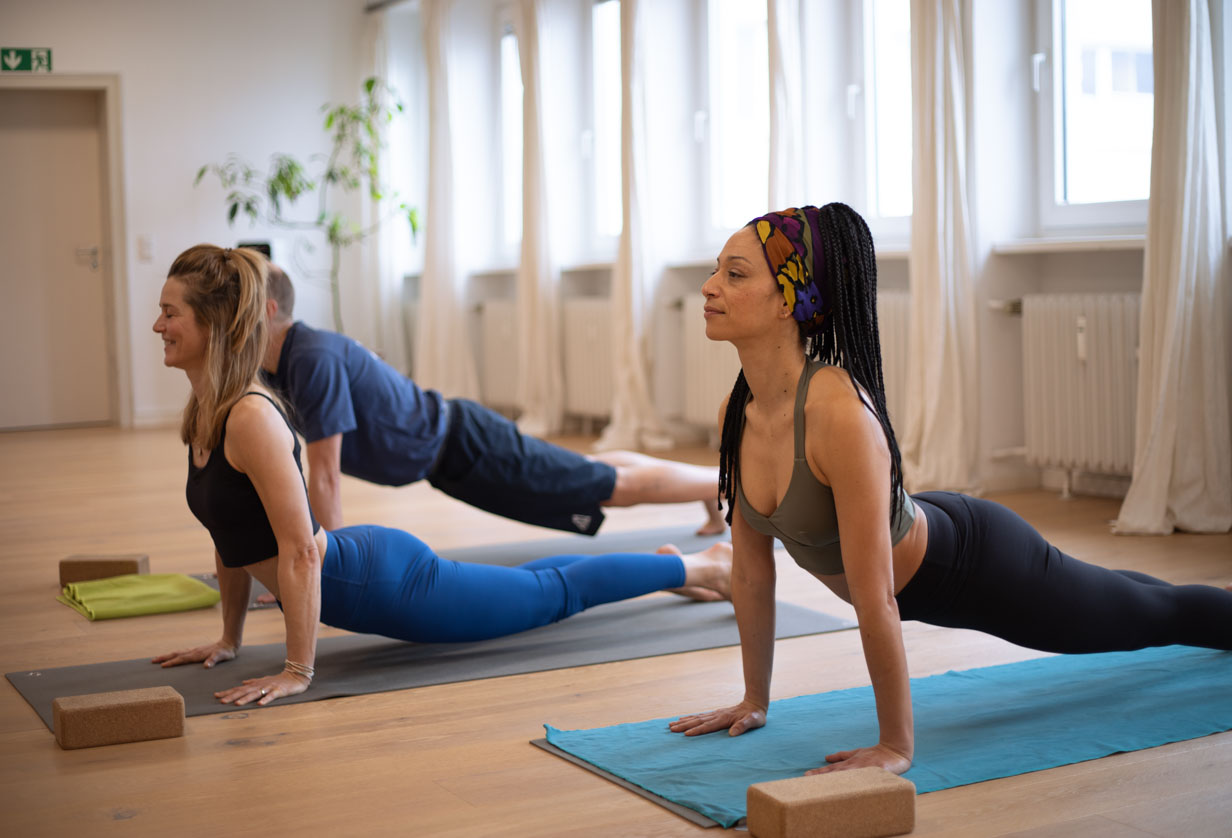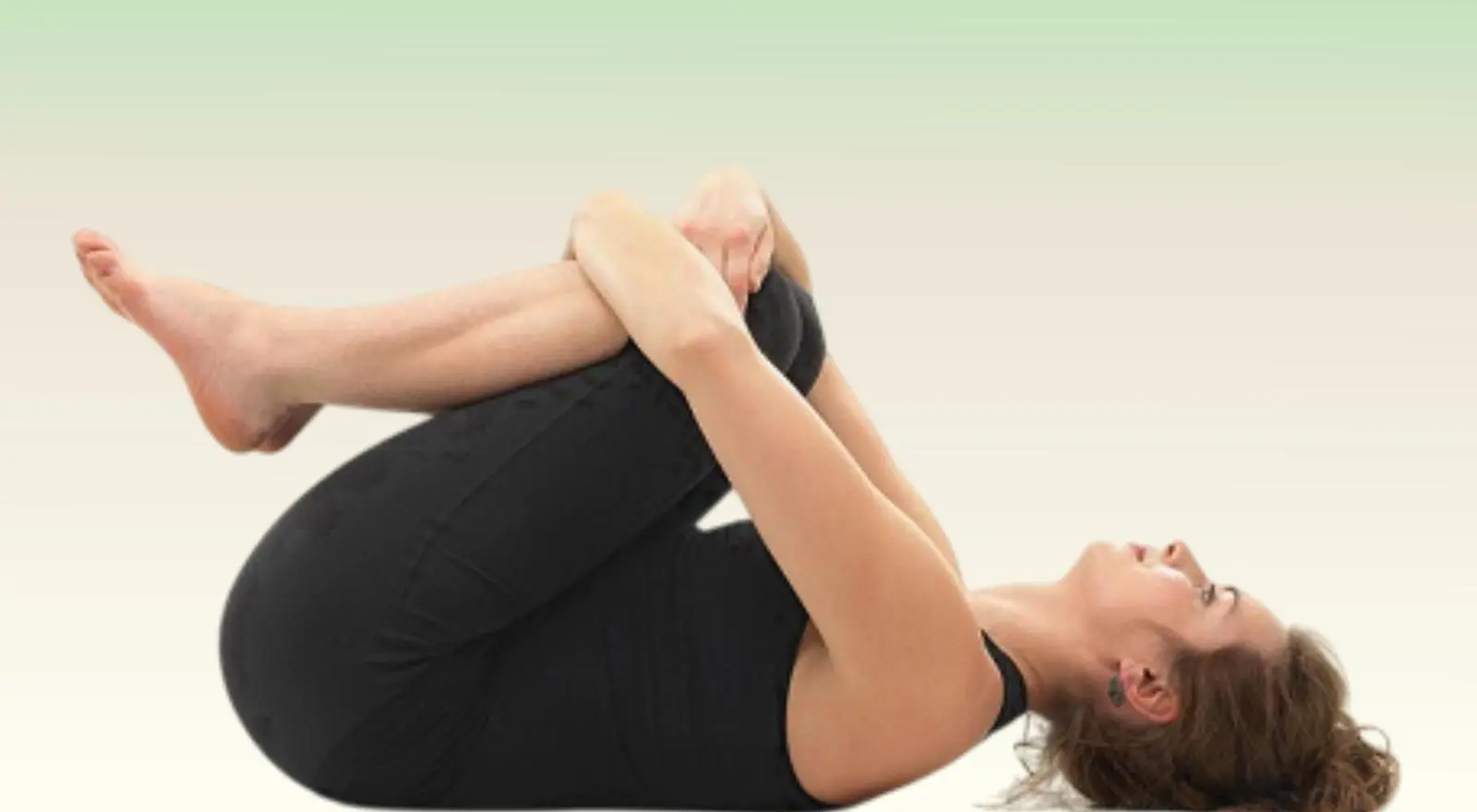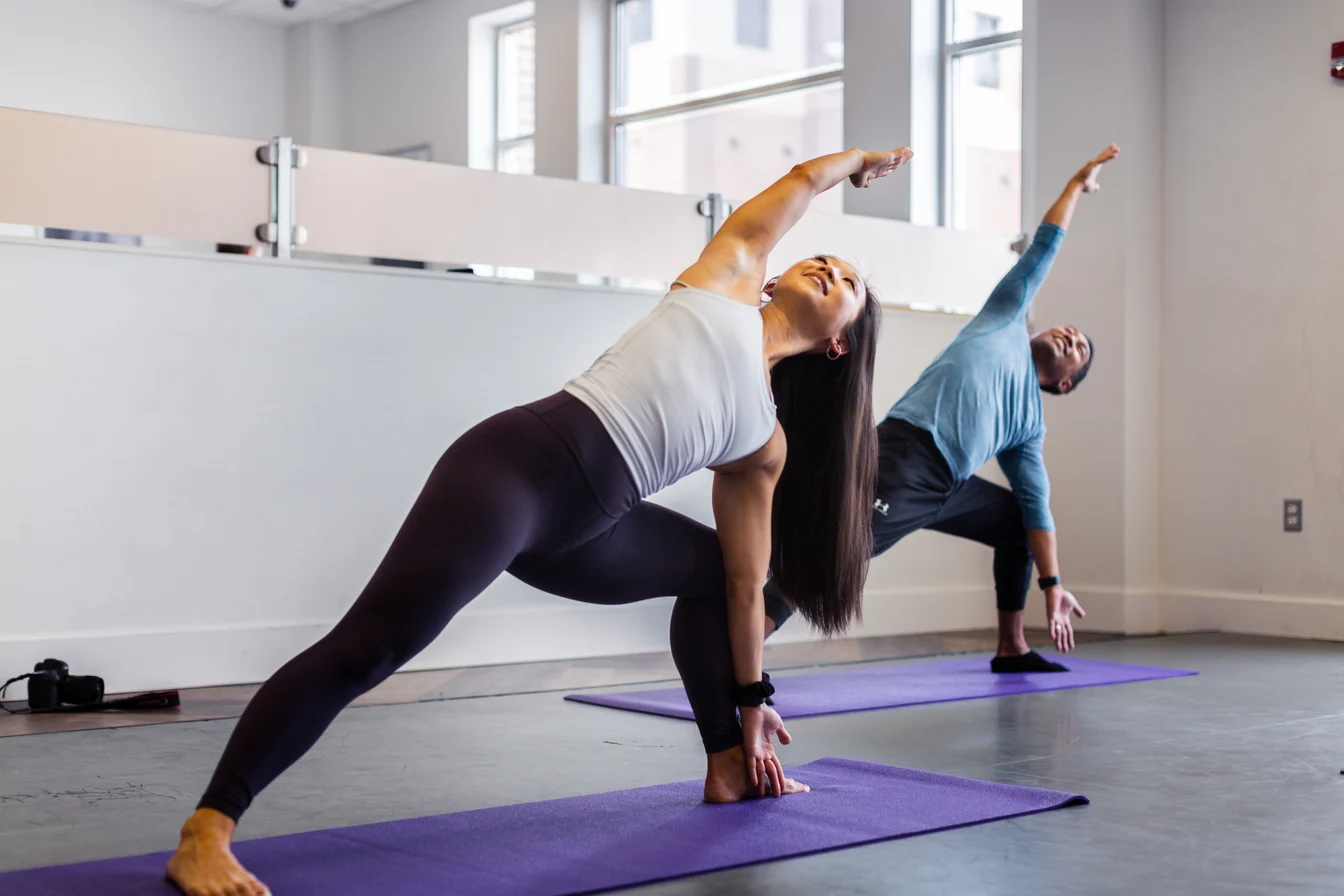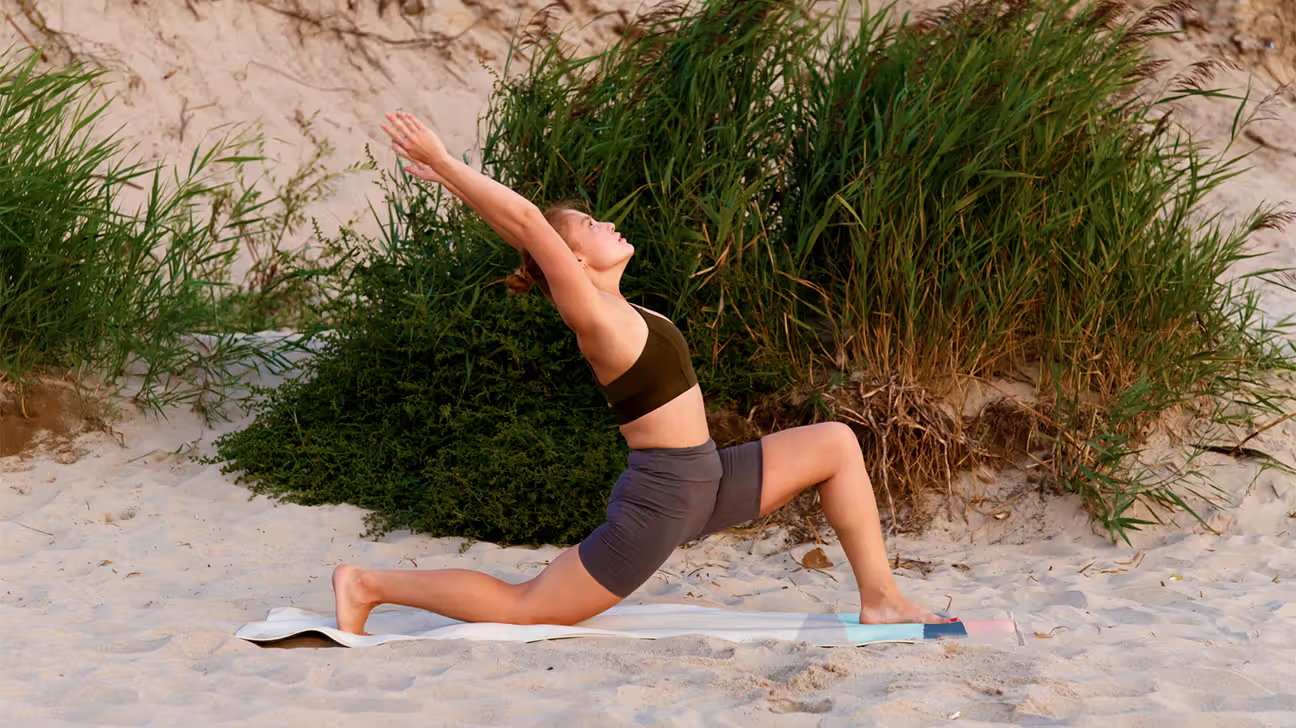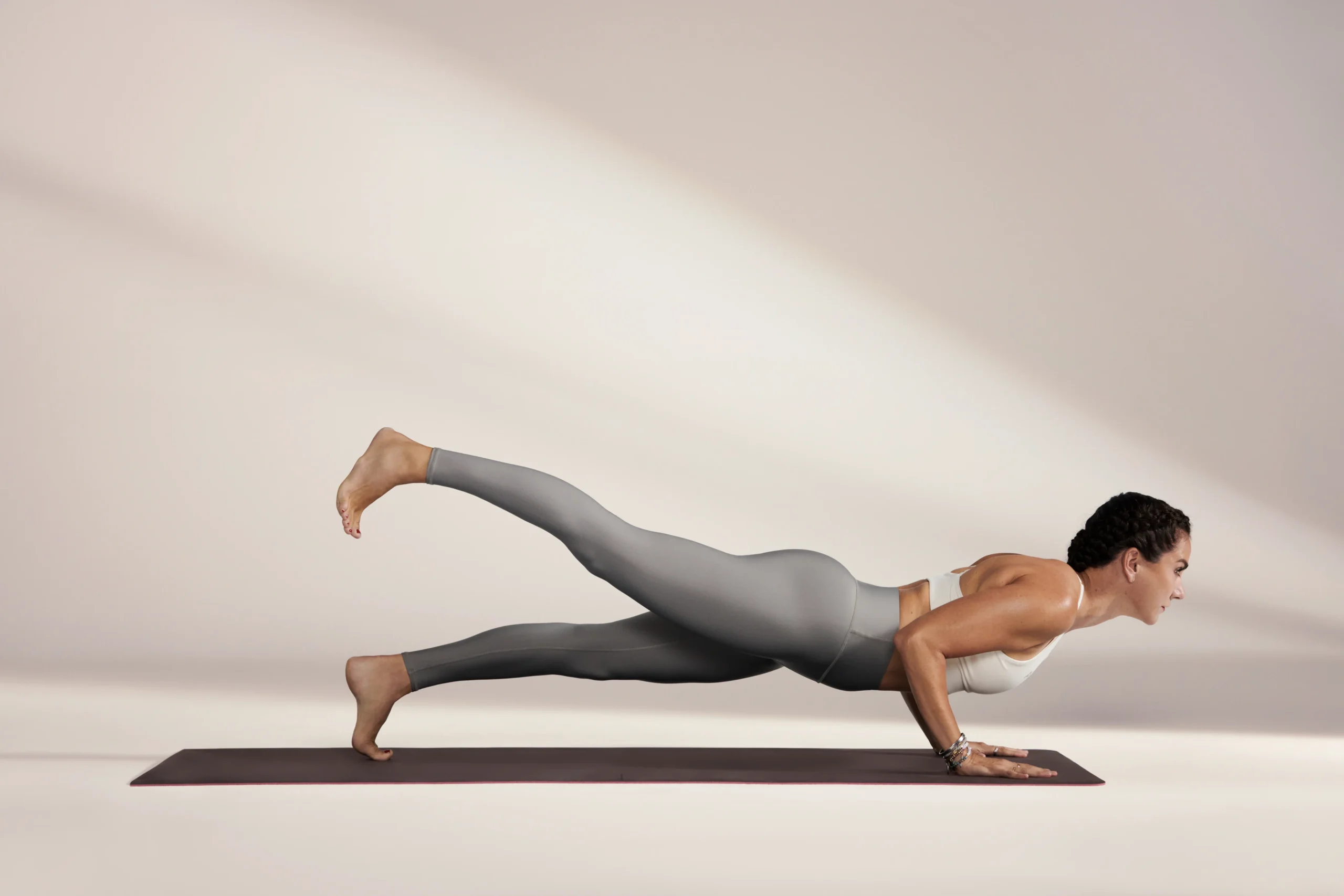Hey there, friend. Picture this: It’s a crisp Saturday morning, and I’m lacing up my sneakers—not for a run, but for a power yoga session that left me drenched in sweat and buzzing with energy. That was five years ago, when I first stumbled into a class, skeptical as hell. I’d spent years grinding at the gym, chasing heavier weights and quicker sprints, but my body felt stuck—tight hips from desk life, nagging shoulder tweaks from poor form. One flow through warrior poses and I was hooked. Power yoga wasn’t just exercise; it was a reset button for my strength, stamina, and that quiet confidence that says, “Yeah, I got this.” If you’re here, maybe you’re feeling that pull too. Let’s dive in and see how this dynamic practice can fuel your own breakthroughs.
What Is Power Yoga?
Power yoga is like the high-octane cousin of traditional yoga—think fluid flows synced to your breath, but cranked up with athletic intensity. Born in the ’90s from Ashtanga roots, it ditches rigid sequences for creative, heart-pumping sequences that blend vinyasa’s grace with strength-building holds. You’ll move through poses like chaturanga and warrior II, holding some for endurance while transitioning others to spike your heart rate.
It’s not about twisting into pretzels; it’s a full-body workout disguised as mindful movement. Classes often run 45 to 90 minutes, sometimes heated for that extra detox sweat. As someone who’s taught a few flows myself after getting certified, I can tell you: It’s accessible yet challenging, perfect for anyone ready to build real power without the clang of weights.
The Science Behind Power Yoga’s Gains
Research backs what my body learned the hard way: Power yoga torches calories—up to 400 in a single session—while sculpting lean muscle. A 2019 study on dancers showed it ramps up anaerobic endurance and upper-body strength, outpacing non-yoga routines. It’s that mix of isometric holds (like plank) and dynamic flows that fires up fast-twitch fibers for power, alongside slower breaths that build aerobic stamina.
I’ve felt it in my runs; post-yoga, my legs don’t quit as fast on those hills. And the mental edge? It lowers cortisol, sharpening focus for progressive overload in any training. No wonder athletes from runners to CrossFitters swear by it—it’s progressive, measurable growth in a mat-based package.
How It Boosts Muscle Strength
Those long warrior holds? They’re sneaky strength builders, engaging quads and glutes like bodyweight squats on steroids. Studies link power yoga to improved muscle tone, especially in the core and arms, without bulking up excessively.
Why Endurance Skyrockets
The nonstop flow mimics interval training, pushing your VO2 max higher. One trial found Parkinson’s patients gained rigidity-busting endurance after just twice-weekly sessions—imagine what consistent practice does for you.
Power Yoga vs. Other Yoga Styles: A Quick Showdown
Ever wondered why your gentle hatha class feels worlds apart from a power flow? It’s all in the pace and intent. Power yoga amps the athleticism, drawing from vinyasa’s breath-movement link but adding endurance-focused holds. Ashtanga sticks to a fixed sequence for discipline, while vinyasa lets teachers freestyle—power just dials it to “sweat mode.”
I remember switching from restorative yin (blissful, but zero burn) to power; it was like upgrading from a stroll to a hike. Both nourish, but power propels progress.
| Style | Pace | Focus | Best For |
|---|---|---|---|
| Power Yoga | Fast, fluid | Strength + cardio | Building endurance, toning |
| Vinyasa | Flowing | Breath-movement sync | Flexibility, creativity |
| Ashtanga | Rigorous, set | Discipline, power | Advanced practitioners |
| Hatha | Slow holds | Alignment, relaxation | Beginners, recovery |
Pros of power yoga: Total-body burn, mental toughness. Cons: Can overwhelm newbies if unmodified.
Key Poses to Ignite Your Strength and Stamina
Power yoga shines through poses that demand grit—think core crushers and balance beasts. Start with these staples; they’ll forge that “unbreakable” feeling I chased after my first marathon flop.
- Warrior II (Virabhadrasana II): Sink into a lunge, arms extended like you’re drawing a bow. It fires up legs and hips for lower-body power. Hold 30 seconds per side—feel the burn? That’s endurance brewing.
- Chaturanga Dandasana: From plank, lower halfway like a hovering push-up. Killer for arms and core; modify on knees if needed. I once collapsed mid-class, laughing at my shaky elbows—progress came from owning the wobble.
- Plank Pose (Kumbhakasana): Forearms or hands down, body straight as a board. Builds total-core stability; aim for 20-60 seconds. Pro tip: Squeeze glutes to avoid sagging hips.
- Boat Pose (Navasana): Sit, lift legs into a V, arms forward. Targets abs like crunches never could. Wobbly at first? Bend knees—I’ve toppled sideways more times than I can count, but it toughens the mind too.
- Bridge Pose (Setu Bandhasana): Lie back, lift hips skyward. Strengthens glutes and back; add leg lifts for extra spice. One student I taught went from “impossible” to nailing it, crediting it for her squat PR.
These aren’t static; flow them in sun salutations for that power punch. Light humor alert: If your first crow pose face-plants, join the club—mine did, right into a giggle fit.
Crafting Your Beginner Power Yoga Routine
New to this? Don’t sweat—literally, though you will. Start with a 20-minute flow three times a week, building to 45 minutes. Warm up with cat-cow breaths, then hit sun salutations A and B for cardio base.
Here’s a simple starter sequence—do 3-5 rounds, resting in child’s pose as needed:
- Mountain Pose: Stand tall, arms overhead. Inhale strength.
- Forward Fold: Exhale, hinge at hips. Release tension.
- Halfway Lift: Inhale, flat back.
- Plank to Chaturanga: Lower slow, push to up-dog.
- Downward Dog: Pedal heels for 5 breaths.
- Warrior I: Lunge, arms up. Switch sides.
End with savasana—five minutes of pure “ahh.” I built my routine piecemeal, swapping desk slumps for this; six months in, my energy doubled. Tools? Grab a grippy mat from Amazon’s top picks and free apps like Down Dog for guided flows.
For classes, scout local spots via Yoga Alliance directory or stream CorePower’s sculpt sessions online. Transactional tip: Budget $15-20 per drop-in; unlimited passes save big for consistency.
Real Stories: How Power Yoga Transformed Lives
Nothing beats hearing it straight from the mat. Take Sarah, a desk-bound mom I met in class—she started power yoga to reclaim post-baby strength. “Three months in, I chased my toddler without huffing,” she shared, eyes sparkling. Or Mike from Reddit, who ditched gym ruts: “Power yoga fixed my climber’s elbows; now I flow through boulders like butter.” His story mirrors mine—endurance isn’t just physical; it’s that emotional high after conquering a shaky crow.
And me? That shoulder nag? Gone after flows that unwound knots I didn’t know I had. These tales aren’t fluff; they’re proof progress feels personal, one sweaty savasana at a time.
Pros and Cons: Is Power Yoga Right for You?
Let’s keep it real—no practice is perfect. Here’s the balanced scoop:
Pros:
- Builds functional strength without equipment—hello, travel-friendly workouts.
- Boosts endurance for sports; one study showed dancers gaining upper-body power fast.
- Mental reset: Flows quiet the chatter, leaving you zen yet empowered.
- Calorie scorch plus flexibility—dual wins.
Cons:
- Intensity can intimidate beginners; ease in to avoid tweaks.
- Heated rooms? Not for everyone—stay hydrated or skip the sauna vibe.
- Less restorative than yin; pair with rest days.
If you’re athletic but craving mindfulness, it’s gold. Recovering from injury? Modify and consult a doc first.
People Also Ask: Your Burning Questions Answered
Google’s got the pulse on what folks wonder—here’s the scoop, straight from common searches.
What is the difference between power yoga and regular yoga? Regular (like hatha) emphasizes slow holds for alignment and calm; power amps the flow for cardio-strength fusion. It’s yoga’s gym remix—more sweat, same soul.
Can power yoga help me lose weight? Absolutely—its high-intensity flows burn 300-600 calories per hour, plus it curbs stress-eating. Pair with clean eats for best results; I dropped 10 pounds blending it with hikes.
Is power yoga suitable for beginners? Yes, with mods! Start slow, focus on breath. Classes often scale; my first was humbling, but empowering.
How often should I do power yoga? Three to five times weekly for gains, with rest days. Listen to your body—overdo it, and you’ll feel it.
Does power yoga build muscle? Lean muscle, yes—through bodyweight resistance. Not Hulk-mode, but toned and capable.
FAQ: Tackling Everyday Curiosities
Got more? These pop up in my DMs and classes all the time.
Q: I’m not flexible—will power yoga mock me?
A: Nah, it meets you where you are. Tight hamstrings? Bend knees in forward folds. Flexibility grows with consistency; mine did, from “stiff board” to “flow queen.”
Q: Heated or not—which is better for endurance?
A: Heated (95°F) amps detox and flexibility, but room-temp builds raw grit. Try both; I prefer heat for that spa-like purge.
Q: Can I do power yoga if I have back pain?
A: Often yes—poses like bridge strengthen the core to support your spine. But chat with a PT first; modifications are key.
Q: What’s the best gear for a power flow?
A: Non-slip mat, moisture-wicking clothes, and a towel for sweat. Check REI’s yoga essentials for durable picks.
Q: How does it compare to HIIT for progress?
A: HIIT’s explosive; power yoga adds breathwork for recovery. Both build stamina, but yoga’s mindful edge prevents burnout.
Wrapping Up: Your Power Awaits
We’ve flowed through the what, why, and how—now it’s your turn. Power yoga isn’t a quick fix; it’s a steady build, turning “I can’t” into “Watch me.” That first class might leave you sore and smiling, but stick with it, and you’ll uncover strength you didn’t know lurked inside. Grab your mat, hit play on a flow, or book that studio spot. What’s one pose you’ll try today? Drop it below—let’s cheer each other on. You’ve got the power; now unleash it.
